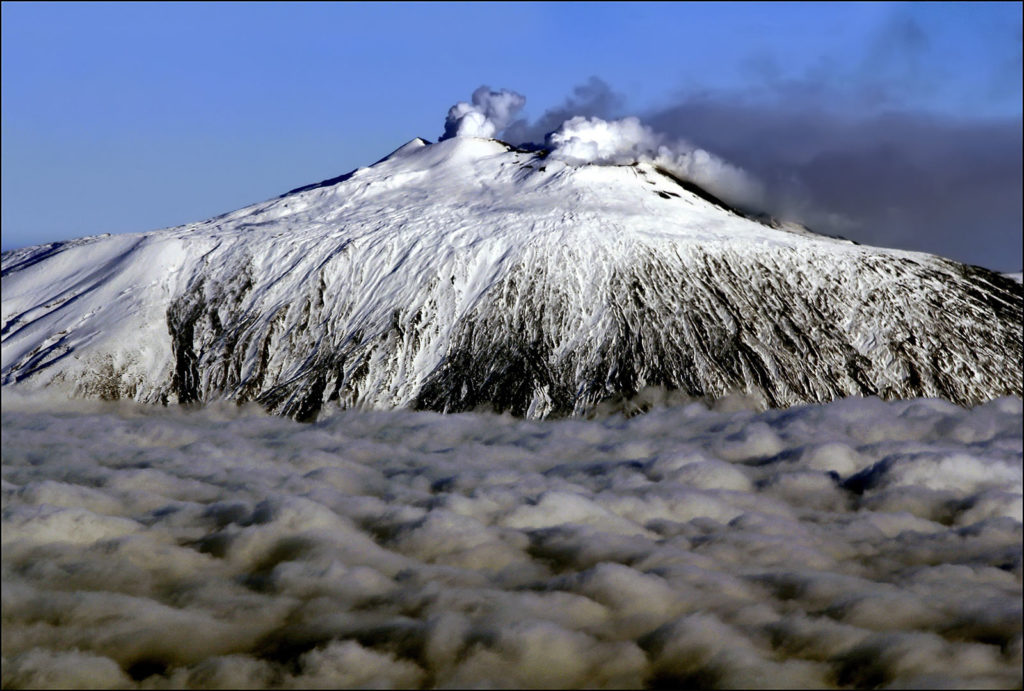In Etna’s evolutionary history, the Elliptical was its first great
stratovolcano
, which definitively marked the shift from eruptive activity fundamentally on fractures and faults, to activity in a central conduit, where most of its eruptions occur. Its initial eruptive phases began around 66,000 years ago, ending 15,000 years ago, when the current eruptive era began, the era of the Mongibello Recente.
The morphology of the Elliptical was probably like present-day Etna.
The slope of some lava flows in the area of Valle del Leone and Punta Lucia on the north-west side of Etna does suggest that the volcanic structure of the time was higher than it is now, and that it reached an altitude of around 3600 metres. However, as in all stories related to the life of a volcano, there are constructive periods as well as destructive ones.
At the end of the Elliptical’s life around 15,000 years ago, a large elliptical
caldera
formed, which is where the volcano took its name, up to 8 km long at its widest point.
Recently, it was discovered that the formation of such a caldera can be linked to a period that also occurred in Etna’s other evolution phases, where the emission of very large and abnormal volumes of lava flows quickly emptied the magma chamber and led to the collapse of its roof, causing the caldera to form.
This once again shows how the study of Etna’s phenomena is still in strong evolution and that as technology advances, more and more important concepts will be acquired to reduce volcanic risk.
